The evolution of American fashion is like a mosaic: diverse, democratic, exhilarating, and ever-changing. Let’s discover this journey from the beginning up until now.

A great majority of us wear what America dictates. However, this was not always the case. Up until recently, American women admired and looked up to European fashion for new trends, especially in Paris.
When you think America you think denim and hip-hop, grunge and neons – there’s so much to uncover. American fashion has had a rich journey of its own that has flourished from once being seen as “lacking originality” to becoming the most influential hub for style in the world. Read on as we trace the evolution of American fashion.
American Fashion Had a Bumpy Start.…
You know how we usually learn about American fashion starting from the 1600s when French colonists brought over European styles? Well, it turns out that there was a lot of really cool fashion happening in Native American communities before that, and it had a big impact on later designers too.
The story of modern American fashion began in the bustling port city of New York, which became the center of the garment industry by the late 19th century. By the early 20th century, the garment industry was New York’s greatest enterprise. It became the destination for the best-imported fabrics and trimmings, the highest concentration of apparel retailers was here.
The 1900s – History of American Fashion
Tracing the evolution: Some major historic looks that shook the 1900s
Before World War I, women’s clothing was restrictive and focused on modesty. Women wore long dresses with corsets that cinched their waists tightly. Men’s clothing was also formal, with suits and hats being commonplace.
While American garment workers excelled at mass manufacturing, some wealthy customers still perceived their designs to be lacking imagination, especially compared to the more creative European styles. The lack of versatile material choices constrained fashion choices in the initial stages of the 1900s. This, along with the conservative thinking governing the people.
Over the next century, however, this thinking took a sharp turn. American fashion gradually evolved and gained its own distinct personality, breaking free from conservative fashion choices and embracing more exposed and androgynous looks, such as pants and athleisure.
The late 1900s saw a range of significant fashion trends, such as the prominent Gibson Girl silhouette, which was prominent at the start of the decade. It was characterized by corseted bodies, lace, and gaudy adornments, and was the idealized image of Edwardian era style. Lace and other decorative elements were vital. Modest gowns, corseted bodies, and gaudy adornment dominated women’s fashion.
1920s – The Era of The Great Gatsby
1920s were the best way to get a peek into the evolution of American fashion.
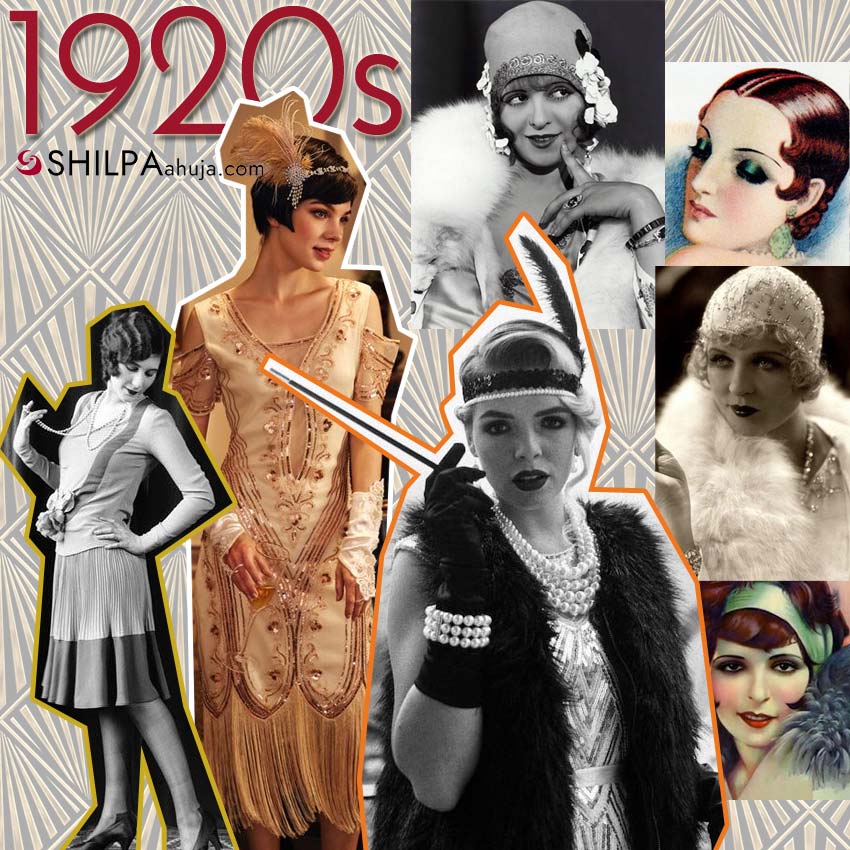
The roaring twenties marked a significant shift in American fashion. Women started wearing shorter dresses that showed off their legs and moved away from corsets and restrictive undergarments.
Male fashion shifted away from the more restrictive hues of the previous century and toward more colorful and opulent textiles. While the fashion of the first two decades of the nineteenth century continued the previous century’s practice of corsets and heavy layers, comparatively the new decade saw women discarding several layers in favor of simpler and lighter clothing that offered greater freedom, comfort, and mobility. The iconic flapper dress emerged, which featured loose dresses with dropped waists, epitomizing the spirit of the era.
The 2013 film The Great Gatsby depicts life in 1920s New York society as a rich, exotic world of expensive commodities and growing social permissions. As people’s lives evolved, so did fashion, with a surge in rising hemlines, exposed stockings, and athletics as daywear. Feathers and gems embellished the evening attire. As can be seen, the iconic flapper dress of the 1920s came into existence.
1930s-40s – Era of Fashion Selling the Movies
The iconic look of Hollywood glamour developed in this era
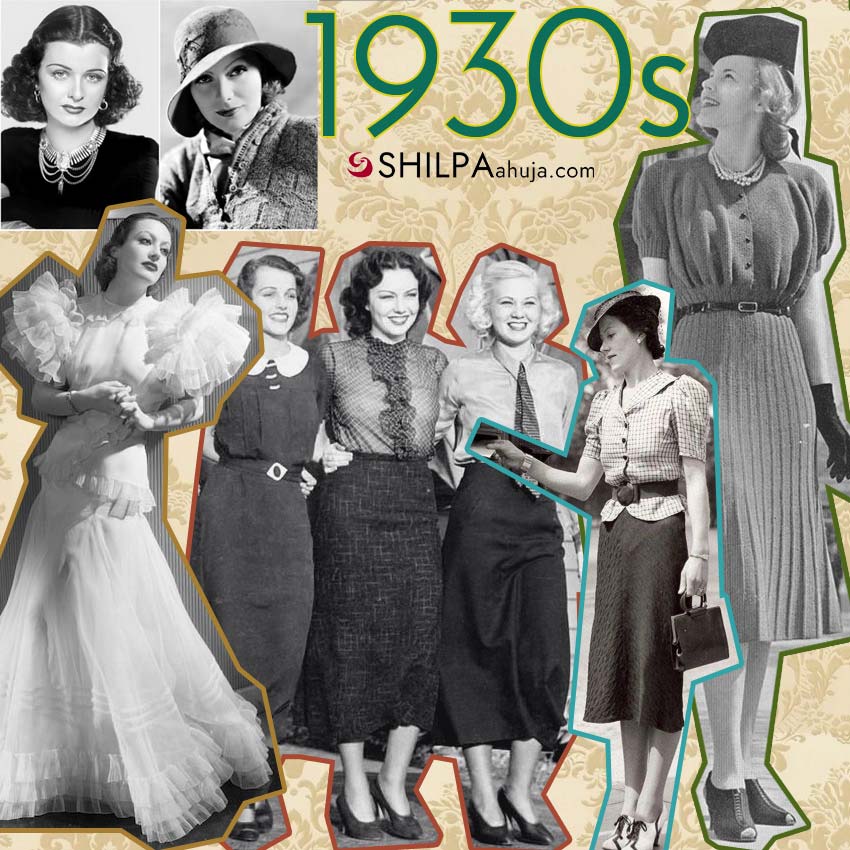
“The Hollywood Costume” and “1930s Fashion” complement one another and serve as two sides of the same coin. In the 1930s, cinema linked fashion to the idea of femininity in America. Hollywood and its relationship to consumerism flourished when it was discovered that women made up the majority of cinema audiences and could be persuaded through this route.
What distinguished fashion in the 30s was the iconic Hollywood glamour and its global reach. French designer Paul Poiret influenced the upper class to wear modern and fashionable styles. Poiret freed women from corsets and invented never seen before clothing pieces such as “hobble” skirts, “harem” pantaloons, and “lampshade” tunics. These style pieces were well carried into the 1940s, the Hollywood golden era.
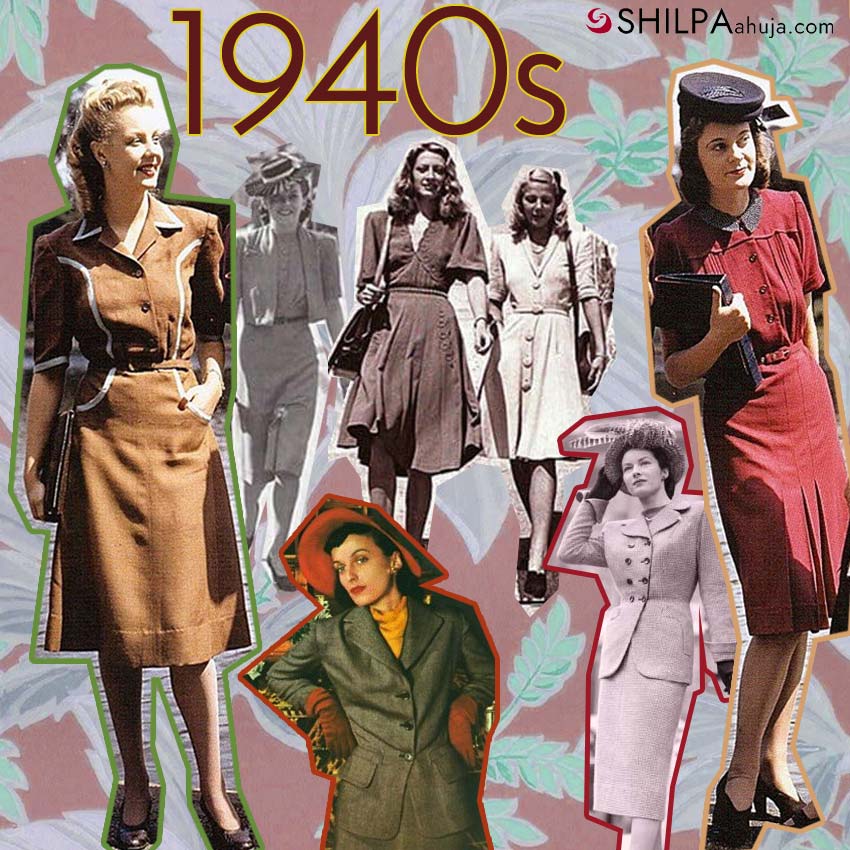
Fashion icon actresses like Audrey Hepburn wore tailored skirt suits, beautiful dresses with full skirts and cinched-in at the waist, and also embraced the androgynous style with suits or a pair of wide-legged trousers and monochrome flats.
During World War II (1939 –1945), fabric rationing led to practical clothing choices for both men and women. This also led to the creation of early corporate styles, which is an important milestone in the evolution of American fashion. After the war ended, fashion took another sharp turn, once again creating more glamorous, feminine, hourglass silhouettes.
1950s – Fashion, Hollywood & Marilyn
Towards the 1950s women consciously began to wear more modern clothes rather than the traditional gowns and frocks they once donned. The 1950s style may be identified by a distinctive hourglass shape with a tiny waist and pronounced breasts and hips. European fashion majorly influenced American clothing.
Christian Dior’s designs, notably his 1947 “New Look” collection, inspired clothing patterns of the Americans in the 1950s. The emphasis of Dior’s design was on highlighting feminine curves, with big busts and flowing skirts cinched up with a tiny waist, producing an exaggerated hourglass form.
The appearance was in stark contrast to World War II fashion designs and gave a novel conceptualization of the female form, which many women who had grown tired of rationing and shortages happily embraced.
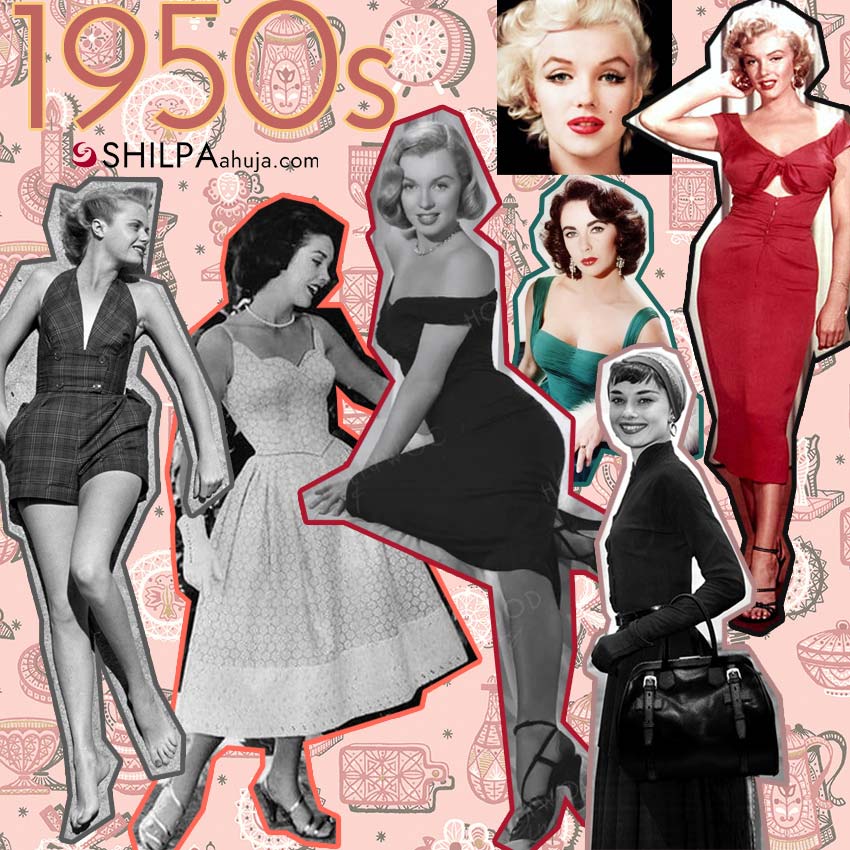
To speak of the 1950s and not mention Marilyn Monroe would be a crime in itself.
Monroe’s imprint on the fashion business and the evolution of American fashion remains permanently iconic. Not just as an image of femininity and sensuality but also as a fashion visionary. Monroe catapulted virtually unknown designers to recognition.
Monroe, in a period of Peter Pan collars and matching gloves, pushed body-conscious designs to the forefront of fashion. Her impact on American fashion proves relevant even today, as pop culture constantly references her style, influencers recreate her looks and designers still don’t get tired of recycling her outfits.
One of Monroe’s most important contributions to fashion and beauty was the embracing of her curvaceous, voluptuous physique. Certainly Kim Kardashian wearing Monroe’s infamous golden dress to the Met Gala in 2022 reflects the extent of Monroe’s influence on body positivity.
1960s – Fashion to Express Oneself
Fashion however took a sharp turn in the 1960s, some historical context on this is a must!
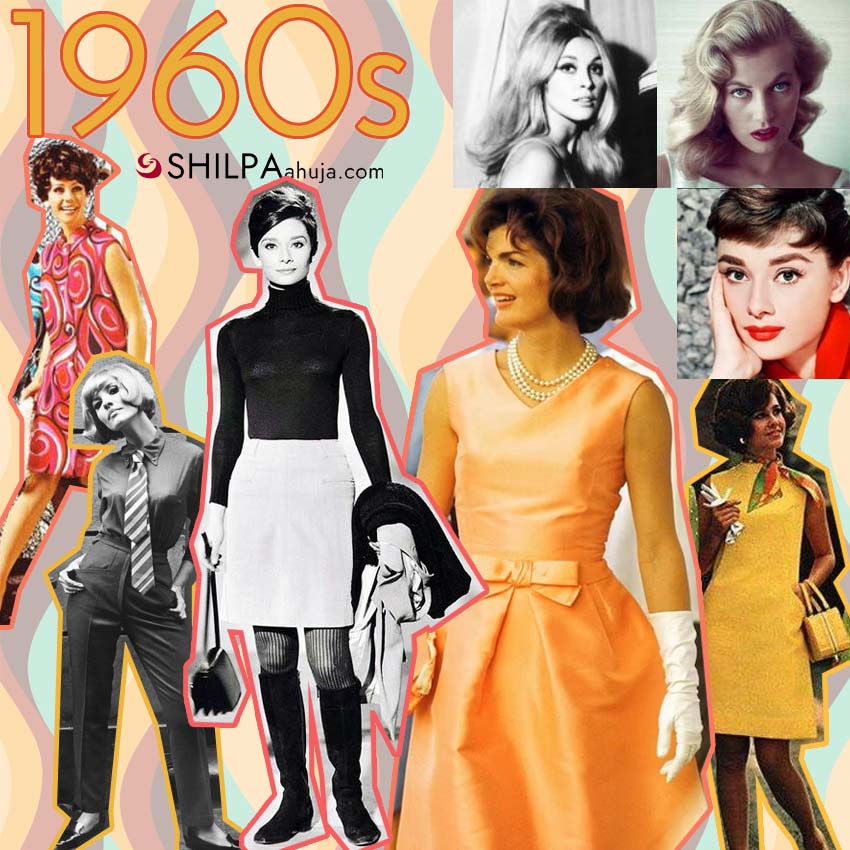
The Cold War’s Space Race strongly affected fashion in the 1960s. Consequently, excitement about space rose. Star Trek, Dan Dare, and Lost in Space were key factors in this. The discovery of synthetic materials in the 1960s fuelled it further. This enabled space-age fashion designers to create clothing with bold designs. They had a plastic feel never seen before.
The bold prints and designs explored in the 1960s clearly set a precedent for hippie fashion, which began in the late 60s. Resenting the materialistic society and American politics, hippies embraced a lifestyle of freedom, spirituality, and peace. Fashion, of course, was a way of expressing this.
Read more: 60s Fashion | A Decade that Unraveled Colorful Wonders
70s – Colorful Fashion Freedom
70s are an unforgettable chapter in the evolution of American fashion.
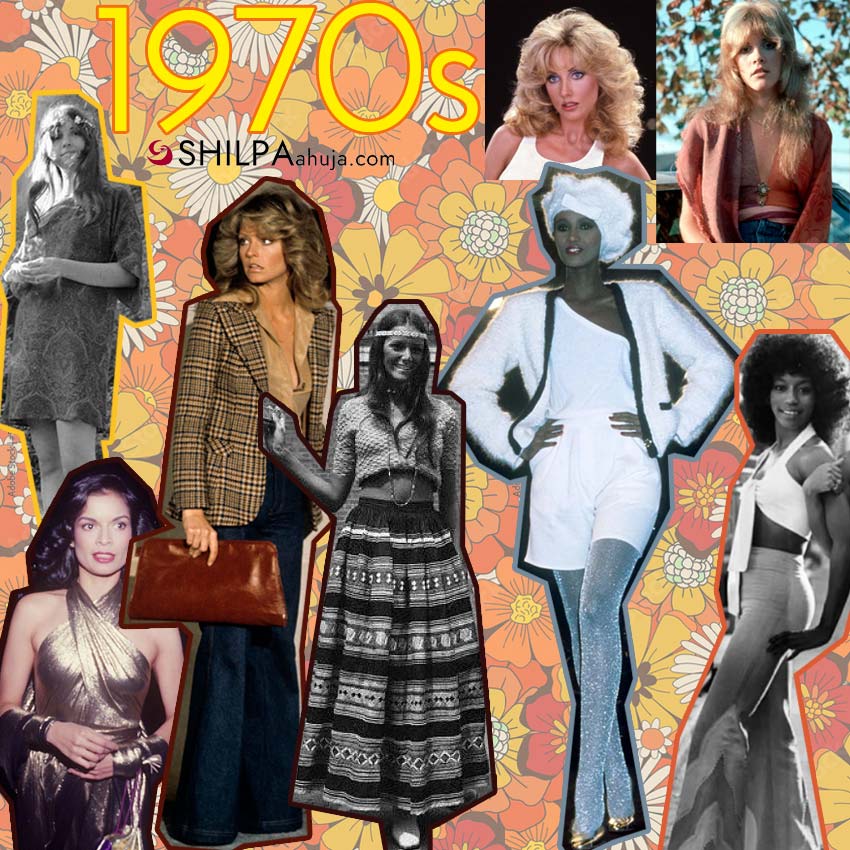
The hippie style continued al throughout the 70s. Bell bottoms and tie-dye prints became popular, with an absolute hippie worry-not-dazy vibe – what an age in America! The trend was dominated by vividly colorful patterns, maxi skirts, and peasant blouses.
While the hippy movement was popular, other groups additionally dressed up for the disco period. The age of dance floors and glitter, wearing satin, and experimenting with off-the-shoulder dresses and jumpsuits. The likes of lamé gowns were spotted too!
Also check out: 70s Fashion Trends
1980s – The Age of Excess
The fashion however drastically changed to more androgynous trends as the years progressed to the 1980s…
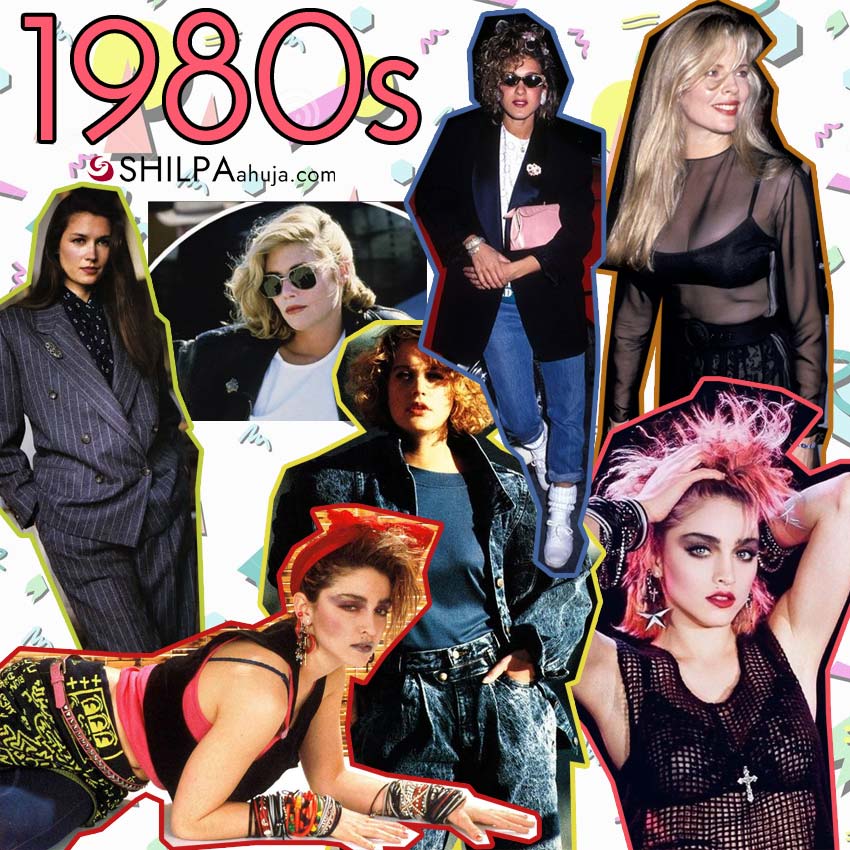
Now here comes the groovy part of our fashion journey! 1980 to 1990s was the era of introducing new styles, many of which are still popular today.
The eighties were all about excess – big hairdos, neon colors, shoulder pads that could rival football players and more denim than you will ever need.
The 1980s was the era of excess and the birth of power dressing. People wanted to show off their success, and boy, did they do it in style! Picture those fierce businesswomen rocking sharp, tailored suits with shoulder pads that could practically double as airplane wings.
But it wasn’t all about power suits and preppy vibes. The 80s were also all about embracing neon hues like hot pink, electric blue, and radioactive green; and bold patterns. Let’s not forget the love affair with animal prints—leopard spots, zebra stripes, you name it. If it roared, it was in! Spandex and mullets got a hold over the trending styles too. Truly an age of great personality in the dressing!
1990s – Grunge, Pop & Supermodels
Some of the best moments in the evolution of American fashion happened in the 90s.
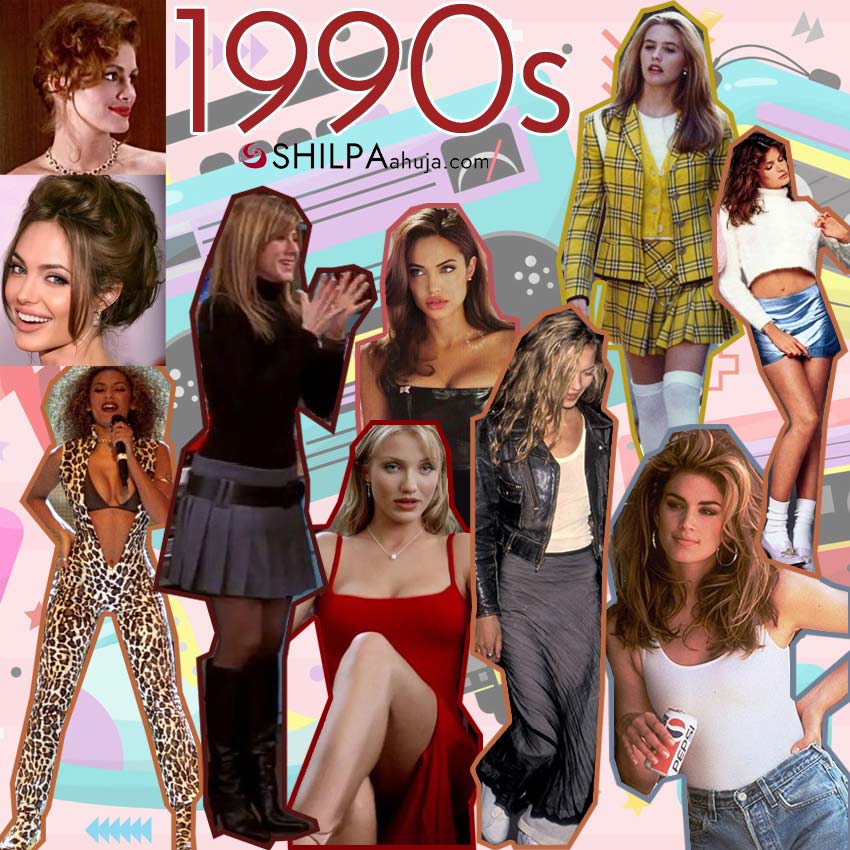
Now, fast forward to the grungy 1990s, and things took a more laid-back turn. The consumerism-hating hippie attitude came back with a different fashion aesthetic. Grunge fashion made its mark and embraced a rebellious, “I don’t care” attitude. Think ripped jeans, flannel shirts, and oversized sweaters. It was all about looking effortlessly cool and not giving a hoot about what anyone thought.
But hey, the 90s weren’t all grunge and gloom. Pop fashion was also all the rage, inspired by the rise of iconic boy bands and pop princesses. Remember the Spice Girls? Oh yes, they had everyone dreaming of sporty, baby, posh, scary, and ginger fashion personas. Platform shoes, crop tops, and colorful tracksuits were must-haves for anyone wanting to channel their inner pop star.
Also check out: 90s Fashion: All You Need to Know About the New Retro!
And speaking of iconic fashion moments, how can we forget the supermodels of the 90s? These fierce ladies strutted their stuff on catwalks and magazine covers, becoming household names. Cindy Crawford, Naomi Campbell, Linda Evangelista, Claudia Schiffer—they were the epitome of glamor and style. They wore slinky slip dresses, rocked the infamous “heroin chic” look, and made us all want to practice our best “blue steel” pose in the mirror.
Even today, models throw on some acid-washed jeans and a bright, oversized blazer, and call it their “off-duty look” as they relive the magic of this unforgettable era!
2000s – Iconic or Questionable?
Probably Both!
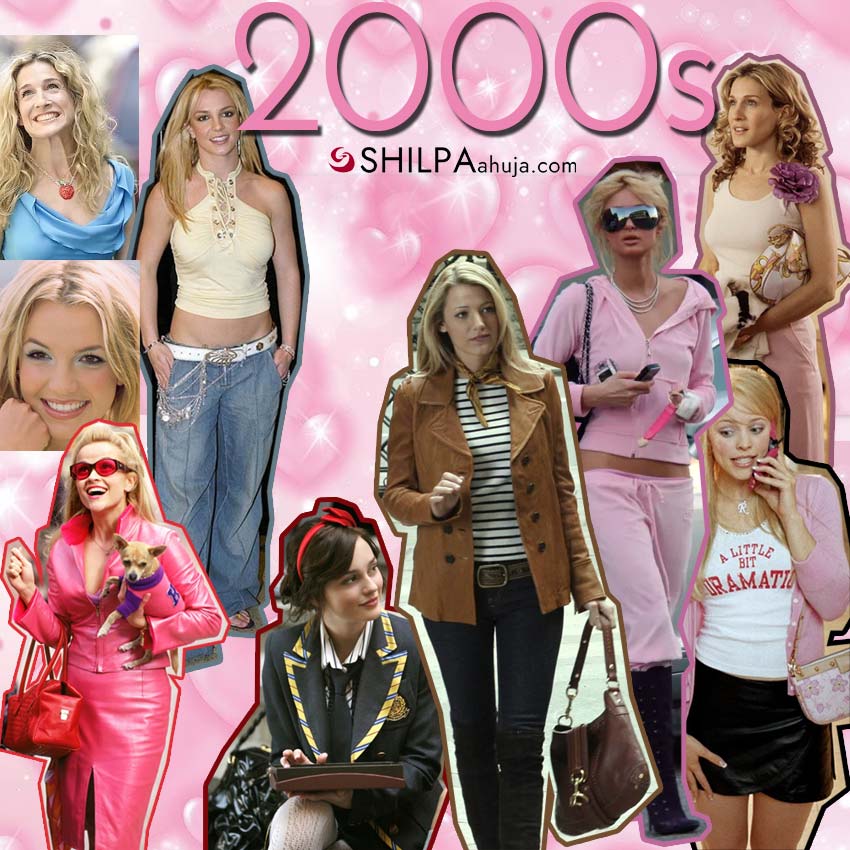
The fashion of the 2000s certainly deserves a mention of its own in our story of the evolution of American fashion! Celebs like Paris Hilton and Britney Spears influenced fashion in the early 2000s. Low-waisted jeans and crop tops were the things! Concurrently, one-shouldered shirts, and exposed midriff truly enhanced runways. Think tie-ups, pinstripe jeans with hat mesh or handkerchief tops, layering, and leather skirts with glossy pants. And how can we forget Paris’s Juicy tracksuits? These were all raving trends!
2010s – From Instagrammable to Basic
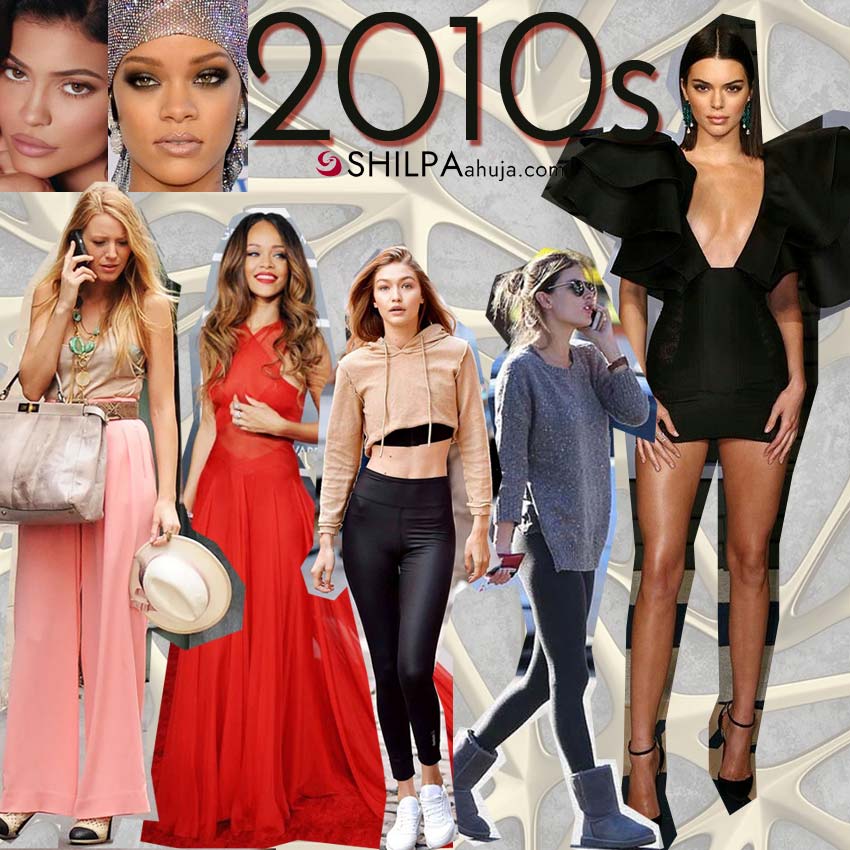
Gradually this was replaced in the 2010s, Athleisure and skinny jeans defined this era! The 2010s had a “basic” look that every other girl donned, tights, Uggs, a cardigan or oversized sweater, and a scarf. Then there were many other smaller trends like ‘extra’ ruffles and big poufy silhouettes, thanks to Instagram. Additionally, fashion icons like Rihanna and Harry Styles introduced ‘Millennial pink’. All in all, making it the It-colour of the age.
Read more: 2010s Fashion: The Grand Narrative of a Decade
2020s – A Mosaic of Nostalgic & Futuristic
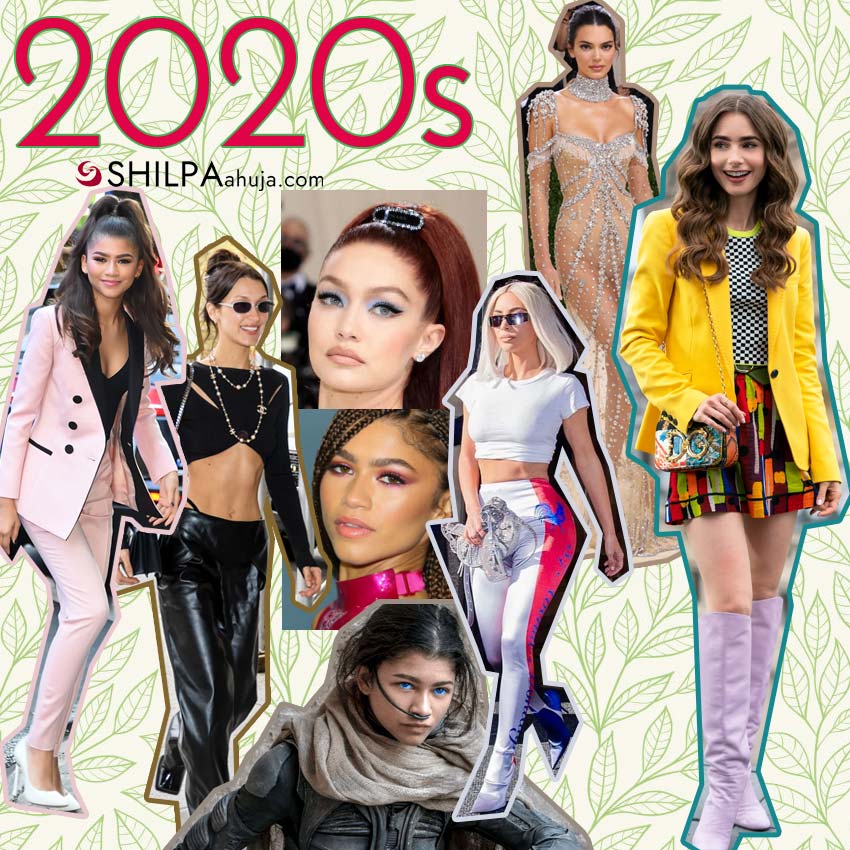
In the 2020s, thanks to the Kardashians we have more toned-down and neutral fashion trends. These celebrated blazers and earthy tones have made a major move. Concurrently, the ever-changing microtrends of Cottagecore, crotchet, platform sandals, and other trends are influenced by TikTok. These forever inspire an extra layer of expression to the clothing of the people!
Gen-Z is the young generation now, who loves creating or adopting an aesthetic, and boy are there so many aesthetics to choose from!
In recent times the Y2K fashion of the 2000s has seen a comeback. Additionally, the teenagers, the Gen Zs are now sporting crop tops, handkerchief tops, and low-waist jeans.
Fashion truly comes a full circle!
With this, we have traced the evolution of American fashion right from the 1900s. Fashion in the twentieth century evolved from corseted gowns to a “whatever flows” attitude. Today, fashion has changed and defied gender stereotypes all around the world, not just in America! The strict dress regulations requiring intricate corsets and gowns are now a thing of the past. Fashion has evolved beyond its utilitarian function to become a form of self-expression! An art form unto itself. Fashion as an expression is a truly remarkable progression that will only continue to create, evolve, and flourish with time.
Read next: Evolution of Fashion Photography
Based on an initial draft by Aaliya Bamboowala.

Shilpa Ahuja the editor-in-chief of ShilpaAhuja.com, which she founded with the goal of inspiring confidence in the modern working woman through fashion. Other than defining the direction of the magazine, she also writes about fashion & beauty trend forecasts, industry analysis, and opinions.
Shilpa’s work has been published in the University of Fashion blog and Jet Airways magazine. She is also an artist, illustrator and cartoonist. She is also the creator of Audrey O., a comic series that represents the lifestyle of millennial women. She enjoys creative writing and world travel. Her art has been exhibited at Harvard Graduate School of Design and the Aroma Hotel, Chandigarh and been published in Chandigarh Times.
Originally from Chandigarh, Shilpa also has a degree in architecture and has worked in interior project management. She is also the author of the book “Designing a Chinese Cultural Center in India”. Shilpa has a Masters in Design Studies degree from Harvard University.
For feedback and questions, please email [email protected].